
The Church of North India (CNI) is the dominant united Protestant church in northern India. It was established on 29 November 1970 by bringing together most of the Protestant churches working in northern India. It is a province of the worldwide Anglican Communion and a member of the World Methodist Council and the World Communion of Reformed Churches. The merger, which had been in discussions since 1929, came eventually between the Church of India, Pakistan, Burma and Ceylon (Anglican), the Methodist Church, Disciples of Christ, and some congregations from the United Church of Northern India.
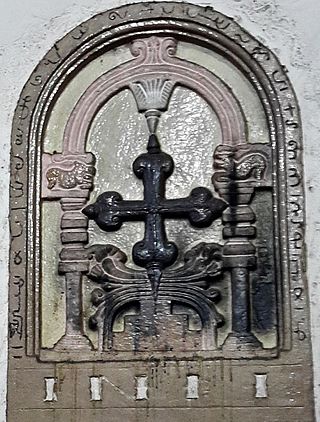
Christianity is India's third-largest religion with about 26 million adherents, making up 2.3 percent of the population as of the 2011 census. The written records of Saint Thomas Christians mention that Christianity was introduced to the Indian subcontinent by Thomas the Apostle, who sailed to the Malabar region in 52 AD.

Bengali Christians are adherents of Christianity among the Bengali people. Christianity took root in Bengal after the arrival of Portuguese voyagers in the 16th century. It witnessed further conversions among the Bengali upper-caste elite during the 19th century Bengali Renaissance.

Mariam-uz-Zamani ;, commonly known by the misnomer Jodha Bai, was the chief consort and principal Hindu wife as well as the favourite wife of the third Mughal emperor, Akbar. She was also the longest-serving Hindu empress of the Mughal Empire with a tenure of forty-three years (1562–1605).

Christians in Singapore constitute 18.9% of the country's resident population, as of the most recent census conducted in 2020. Christianity is the second largest religion in the country, after Buddhism and before Islam. In 2020, about 37.1% of the country's Christians identified as Catholic with 62.9% labeled as 'Other Christians', most of which identify as Protestant, with some identifying as Orthodox or other minority Christian denominations.
Protestants in India are a minority and a sub-section of Christians in India and also to a certain extent the Christians in Pakistan before the Partition of India, that adhere to some or all of the doctrines of Protestantism. Protestants in India are a small minority in a predominantly Hindu majority country, but form majorities in the north-eastern states of Meghalaya, Mizoram and Nagaland and significant minorities in Konkan division, Bengal, Kerala and Tamil Nadu, with various communities in east coast and northern states. Protestants today trace their heritage back to the Protestant reformation of the 16th century. There are an estimated 20 million Protestants and 16 million Pentecostals in India.
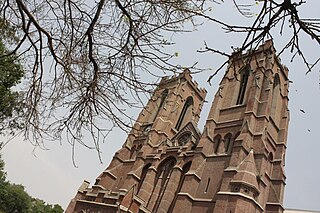
The Cathedral Church of the Resurrection, also known as Lahore Cathedral, is a United Protestant cathedral located in Lahore, Pakistan. It was built on The Mall road in 1887, opposite the Lahore High Court.

The Diocese of Medak is one of the prominent Dioceses in the Church of South India, a Protestant Uniting Church with its headquarters in Medak comprising nearly 200 Presbyters ministering to Telugu, Lambadi, Tamil, Kannada, Malayalam, Hindustani, English and other linguistic groups numbering nearly 1/3rds of a million spread over 105 pastorates and administered through 3 District Church Councils (DCC), namely, the Town DCC, the Medak DCC and the Godavari DCC geographically located in the erstwhile civil districts of Adilabad, Nizamabad, Medak, Rangareddy, Hyderabad and Mahboobnagar in Telangana.

Christianity in West Bengal, India, is a minority religion. According to the 2011 census of India, there were 658,618 Christians in West Bengal, or 0.72% of the population. Although Mother Teresa worked in Kolkata (Calcutta), Christianity is a minority religion in Kolkata as well. West Bengal has the highest number of Bengali Christians. Bengali Christians have been established since the 16th century with the advent of the Portuguese in Bengal. Later in the 19th and 20th centuries, many upper-class Bengalis converted to Christianity during the Bengali Renaissance under British rule, including Krishna Mohan Banerjee, Michael Madhusudan Dutt, Anil Kumar Gain, and Gnanendramohan Tagore. Aurobindo Nath Mukherjee was the first Indian to be Anglican Bishop of Calcutta.
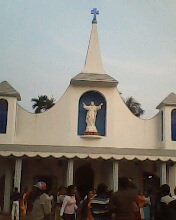
Christianity is one of the religions in Tripura, a state in North East India. According to the Indian Census 2011, the population of Christians in Tripura is 159,882 or 4.35% of the total population. Christians are mostly found among the indigenous communities of the state such as the Tripuri, Lushai, Kuki, Darlong, Halam etc. Among the Scheduled Tribes of the state Christians share is 13.12% of the population.

Christianity in the state of Tamil Nadu, India is the second largest religion in the state. According to tradition, St. Thomas, one of the twelve apostles, landed in Malabar Coast in AD 52. In the colonial age many Portuguese, Dutch, British and Italian Christians came to Tamil Nadu. Priests accompanied them not only to minister the colonisers but also to spread the Christian faith among the non-Christians in Tamil Nadu. Currently, Christians are a minority community comprising 6% of the total population. Christians are mainly concentrated in the southern districts of Tamil Nadu - Kanyakumari, Thoothukudi and Tirunelveli.

Christianity is a minority religion in Uttar Pradesh, the largest state of India. The Christians of Uttar Pradesh come under the territory of Lucknow and Agra Diocese of Church of North India and of the Archdiocese of Agra. The Uttar Pradesh Christian Revival Church (UPCRC) was established in 2017 as a part of the Christian Revival Church.
Telugu Christians or Telugu Kraistava are a religious community who form the third-largest religious minority in the Indian states of Andhra Pradesh and Telangana. According to the 2001 Census of India, there are over a million Christians in Andhra Pradesh, constituting around 1.51% of the state's population. This is a decrease from the 1971 census figure which put the percentage of Christians in state as 2%, and this decrease is mainly a result of low birth rates and emigration.
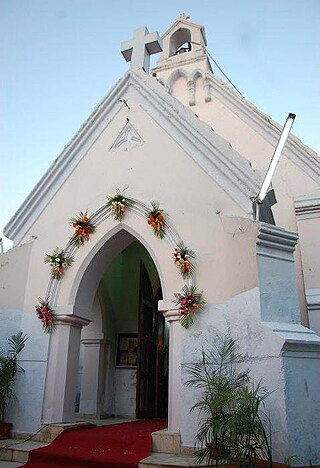
St. Thomas' Church is located in Hisar city of Haryana, India. It is located in central part of Hisar near railway station. It has been declared as a historical monument by Indian National Trust for Art and Cultural Heritage. The Church is dedicated to St. Thomas, one of the 12 main disciples of Jesus Christ.
Mirza Zulqarnain or Mirza Zul-Qarnain was a diwan and faujdar of Armenian descent in the court of the Mughal Empire.
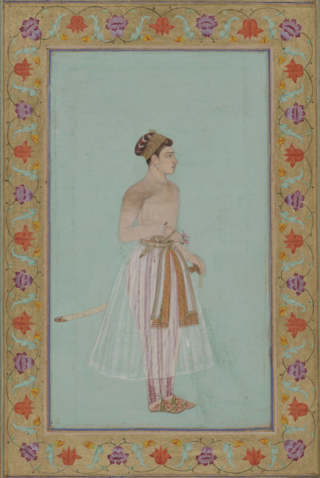
Hushang Mirza or Hoshang Mirza was a Mughal prince and grandson of the third Mughal emperor, Akbar. He was the youngest son of Daniyal Mirza and nephew of the fourth Mughal emperor, Jahangir.

Shaikh Farid Bukhari, also known by the title Murtaza Khan, was a leading Mughal noble during the reign of the Mughal emperors Akbar and Jahangir. He served as governor of Gujarat and later of Punjab. He was also well known as an architectural patron in Mughal India, and founded the city of Faridabad in modern-day Haryana, India.















